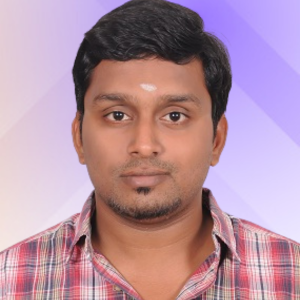Chidambaram Vetrivel
The 9th edition of the Global Testing Retreat 2024!
About Speaker

Chidambaram Vetrivel
QA Architect
Dentsu Global Services
Chidambaram Vetrivel is a skilled QA Architect and Automation Architect with deep expertise in designing and implementing automated testing frameworks. Extensive experience in quality Engineering, he has architected scalable automation solutions that ensure the reliability and performance of complex software systems. He has been front runner and driving PCI DSS audit for the past 6 years succesfully ensuring organizational security. Seasoned speaker on emerging trends and Secuirty enthusiast. Specializes in continuous integration/continuous deployment (CI/CD) pipelines, test automation strategy, and optimizing QA processes. And his hobbies involve activities that focus on building, exploring, or learning about new emerging technology.
More Speakers
In this session we are going to discuss in detail about the comprehensive risk reduction framework, that integrates visibility risk assessment, issue prioritization and validation. It actually facilitates the continuous identification and testing of exposed systems, and vulnerabilities and thus by enhancing the decision-making principles and process more effectively proactive.
This framework/AI-ML pattern focuses on scoping our environment, discovering vulnerabilities, prioritizing them based on risk, validating potential attach paths and then mobilizing those vulnerabilities. These patterns and focuses more on offensive side of security. Instead of waiting for the attack, they identify potential entry points and take the necessary step towards it.
Traditional vulnerability management offers snapshot in time, leaving the blind spots that attackers can exploit. This is where continuous Threat exposure management using AI-ML patterns can help.
Unidentified and unpatched vulnerabilities – New vulnerabilities are discovered all the time. Using continuous threat exposure pattern we can go beyond point-in-time scans, offering continuous identification of vulnerabilities.
Identifying the vulnerabilities at the earliest stages using the ML identification pattern technique and assessing the point of impact. Then Raking the vulnerability based on severity, impact and compliance.
Mitigating prioritized vulnerabilities through patching and security controls. Continuously monitor for new vulnerabilities and emerging threats. Automated and reactive approaches to threat assessment and management cannot provide the full breath and insight that organizations require now. This process aims to consistently monitor, evaluate and mitigate security risks through strategic improvement plans.

